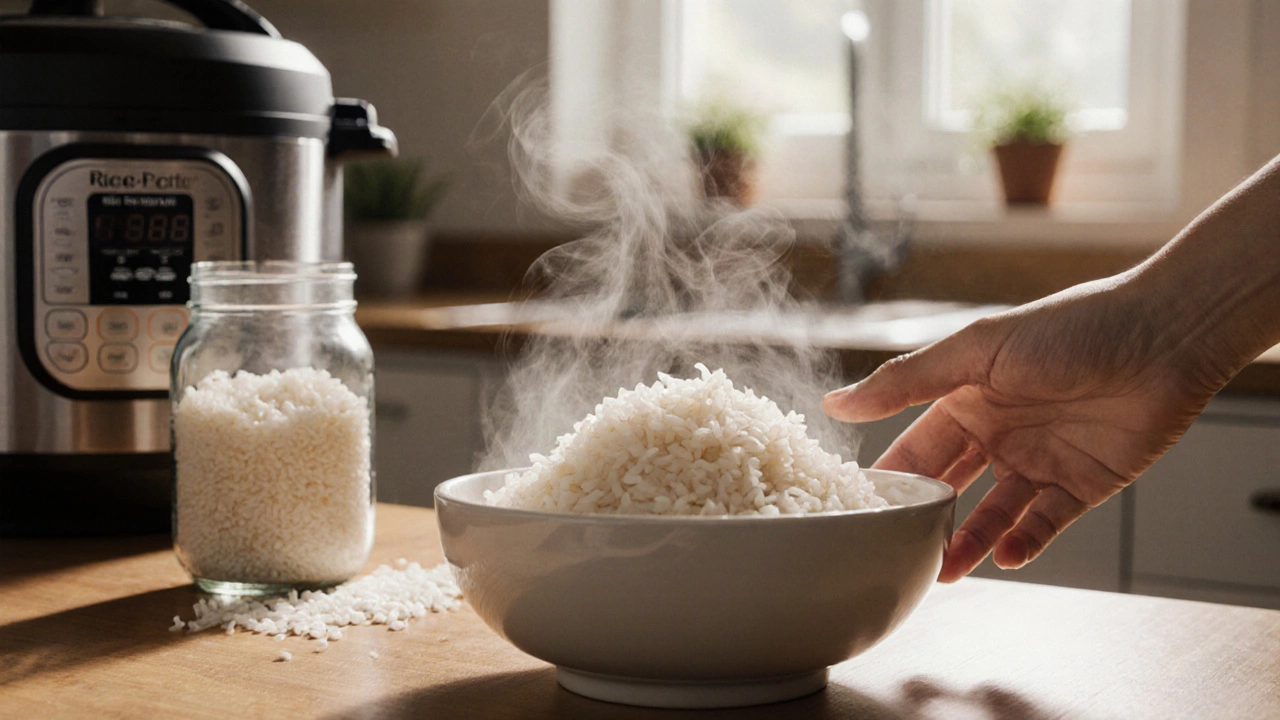Celiac Safe Rice: What to Choose and How to Cook It
If you have celiac disease, rice is a kitchen staple that can feel reassuringly safe. Most plain rice—white, brown, basmati, jasmine—doesn't contain gluten, but the real challenge is making sure nothing sneaks in during storage, preparation, or cooking. Below you'll get the basics on picking truly safe rice, avoiding cross‑contamination, and whipping up a couple of tasty dishes in minutes.
Which Rice Varieties Are Naturally Gluten‑Free?
All single‑grain rice is naturally gluten‑free. That means long‑grain white rice, short‑grain brown rice, wild rice (actually a grass), and specialty types like black rice or red rice are safe on the grain itself. The catch is the processing stage. Some brands add flavor packets, seasoning blends, or use shared equipment that could introduce gluten. Look for labels that say “gluten‑free” or “certified gluten‑free.” Those certifications mean the product was tested and the facility follows strict protocols.
When you buy in bulk, choose bins that are clearly marked for gluten‑free use only. If you’re unsure, a quick call to the manufacturer can clear things up. It’s worth the extra step because a hidden grain of wheat can ruin a whole meal for a celiac.
Preventing Cross‑Contamination in Your Kitchen
Even the safest rice can become risky if it touches gluten‑laden surfaces. Use a dedicated rice pot or a clean saucepan that hasn't been used for pasta, bread, or anything with flour. Rinse the rice in a colander you keep separate for gluten‑free grains—just a quick rinse removes dust and any residual starch that might trap tiny gluten particles.
When cooking, use fresh water and a clean lid. If you’re using a rice cooker, make sure the inner pot is wiped down and hasn't been used for other grains. For extra peace of mind, consider a small, single‑purpose rice cooker that you keep gluten‑free all the time.
Store your rice in airtight containers that you use only for gluten‑free foods. This stops the aroma from other pantry items mixing in and keeps bugs out.
Quick Celiac‑Safe Rice Recipes
Now that you’ve got the basics covered, here are two simple recipes you can throw together on a busy night.
1. Lemon‑Herb Brown Rice
Ingredients: 1 cup brown rice, 2 cups water, zest of 1 lemon, 1 tbsp chopped fresh parsley, 1 tbsp olive oil, pinch of salt.
Method: Rinse the rice, then bring water to a boil in a clean pot. Add the rice, reduce to a simmer, cover, and cook 40‑45 minutes. When it’s done, stir in lemon zest, olive oil, parsley, and a pinch of salt. Serve it with grilled fish or roasted veg. It’s bright, fresh, and fully gluten‑free.
2. One‑Pot Mexican Rice Bowl
Ingredients: 1 cup white rice, 1½ cups low‑sodium chicken broth (gluten‑free), ½ cup canned black beans (rinsed), ½ cup corn kernels, 1 tsp cumin, ½ tsp chili powder, avocado slices for topping.
Method: In a clean skillet, heat a splash of oil, add the rice and toast for 2 minutes. Pour in broth, beans, corn, and spices. Bring to a boil, then lower heat, cover, and simmer 15‑18 minutes. Top with avocado and a squeeze of lime. This bowl packs protein, fiber, and flavor without any hidden gluten.
Both dishes use basic pantry staples and finish in under 30 minutes—perfect for anyone juggling a busy schedule and strict dietary needs.
Remember, the key to staying celiac‑safe isn’t just picking the right grain; it’s about creating a routine that protects your food every step of the way. Keep your rice storage clean, use dedicated cookware, and double‑check labels. With those habits in place, rice can be a reliable, delicious base for countless meals.
Enjoy experimenting, and don’t let celiac restrictions limit your creativity. Rice is versatile, budget‑friendly, and—when handled right—absolutely safe.

Is Rice Gluten-Free? All You Need to Know
Rice naturally contains no gluten, making it safe for celiac and gluten‑free diets. Learn about cross‑contamination, label checks, cooking tips, and myth‑busting facts.
More Detail